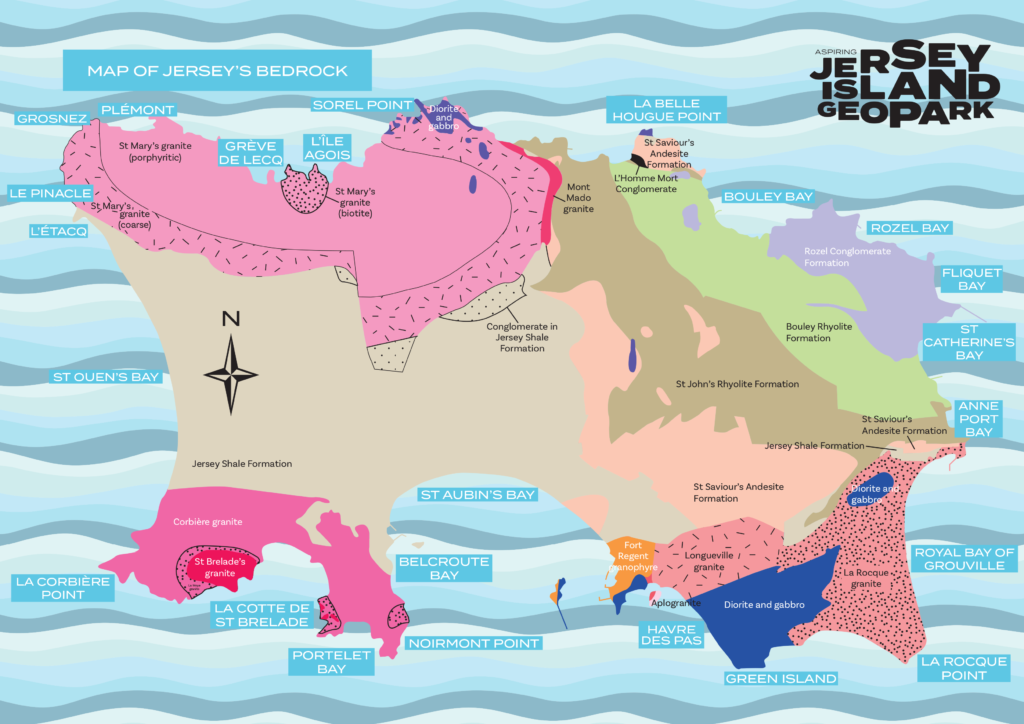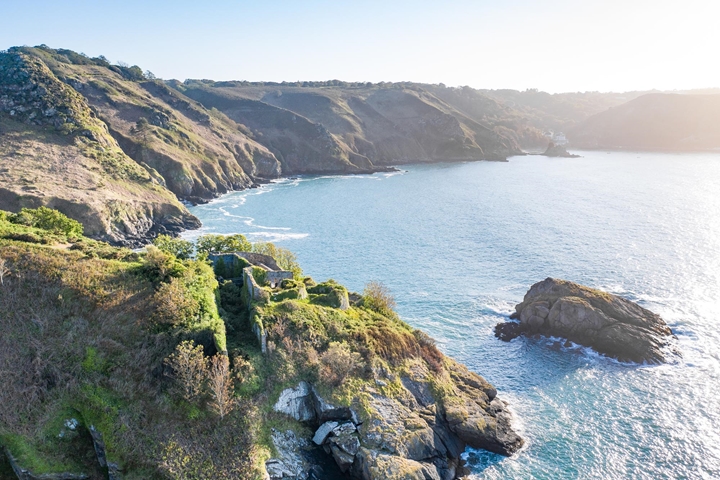What is a Geopark?
A geopark is a UNESCO-designated area containing one or more sites of particular geological importance, intended to conserve the geological heritage and promote public awareness of it, typically through tourism.
A UNESCO Global Geopark comprises a number of geological heritage sites of special scientific importance, rarity or beauty. These features are representative of a region’s geological history and the events and processes that formed it. It must also include important natural, historic, cultural tangible and intangible heritage sites.
Jerseys Island Geological maps:


A Geopark is about more than rocks. Jersey is a strong contender for this special designation because of our Island’s exceptional geology and our important cultural heritage which forms the outstanding surroundings we enjoy every day. Whether exploring Jersey’s diverse landscapes or seascapes there is lots to discover and inspire you.
Examples of Jerseys Geopark:
Jerseys Geological History:
The Island of Jersey has a geology that is significantly different to that of the United Kingdom and even from that of the other Channel Islands. Many of the island’s geological sites are of regional and international significance and some have attracted global attention.
Jersey consists of a striking variety of sedimentary and igneous rocks, varying from shales, greywackes and conglomerates to extrusive andesites, rhyolites and ignimbrites and several varieties of plutonic granite and diorites and gabbros.
Jersey is the sort of place that appeals to geologists. Millions of years ago it was in an area near a volcano. The lava which spewed forth formed the dark, mauve coloured rocks peculiar to Jersey. These rock formations around the coastline tell the story of how the island was formed in ancient times.
Jerseys Geological Heritage book – https://shop.societe-jersiaise.org/index.php?route=product/product&product_id=624

Jersey granites:
Granite – is a light coloured, grey to pink, coarsely crystalline, plutonic, acid igneous rock composed of quartz, alkali feldspar, generally orthoclase, and biotite and/or muscovite.
Jersey is famous for its granites, which have been favoured as a building material for thousands of years. These major intrusive or ‘plutonic’ rocks were formed between 580 and 480 million years ago by molten rock cooling and solidifying between the Earth’s surface.
Three fascinating granite masses occur in Jersey and form the north west (NW), south west (SW) and south east (SE) corners of the island; they are well exposed and easily accessible, with interesting relationships to adjacent rocks and all within 15km of each other.
They are fascinating because two of them, the SW and the NW ones, consist of three and four different granites respectively, but of different ages, while the SE one consists of four different granites which have yet to produce reliable dates.
In addition, the NW and granite masses include gabbros and diorites, with structures and textures that make their relationships to each other even more interesting study material.









